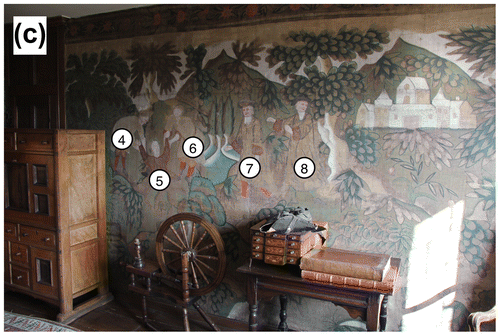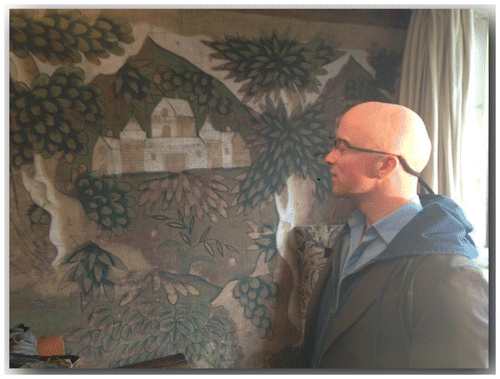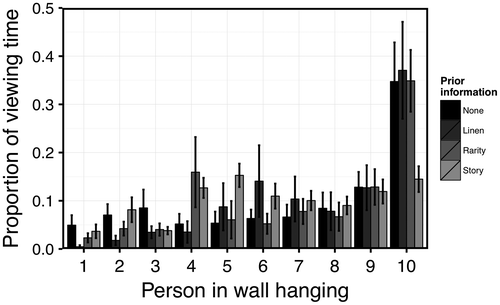Figures & data
Fig. 1. Queen Margaret’s Chamber, Owlpen Manor, Gloucestershire, with insets showing details of the contents and painted cloths, early eighteenth century.
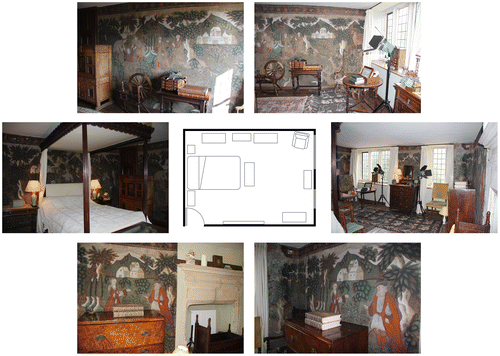
Fig. 2a. Despite how it feels, clear vision is restricted to a small region in the centre of where we look. Vision becomes increasingly blurry with distance from the centre.
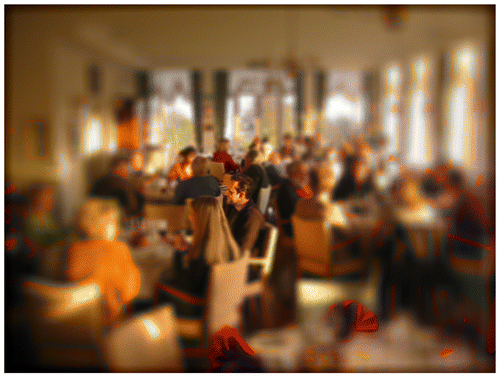
Fig. 2b. Eye-movement behaviour of an individual viewing a photograph of the interior of an office building. Dots indicate locations at which the eyes paused for periods of fixations, lines indicate the eye movements that brought the eye to each location. Viewing is highly selective. Figure adapted from B. W. Tatler, M. Hayhoe, M. Land and D. H. Ballard, ‘Eye guidance in natural vision: reinterpreting salience’, Journal of Vision, xi, no. 5 (2011), pp. 1–23.
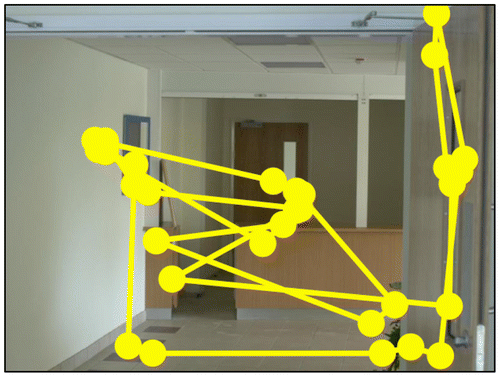
Fig. 3. Recordings of one participant viewing Ilya Repin’s painting The Unexpected Visitor (1884) seven times, each with different instructions prior to viewing. Each record shows eye movements collected during a three-minute recording session. The instructions given were: (a) Free examination. (b) Estimate the material circumstances of the family in the picture. (c) Give the ages of the people. (d) Surmise what the family had been doing before the arrival of the unexpected visitor. (e) Remember the clothes worn by the people. (f) Remember the position of the people and objects in the room. (g) Estimate how long the unexpected visitor had been away from the family. Illustration adapted from A. L. Yarbus, Eye Movements and Vision (New York: Plenum Press, 1967), fig. 109, for M. Land and B. W. Tatler, Looking and Acting: Vision and Eye Movements in Natural Behaviour (Oxford: Oxford University Press, 2009), p. 43.
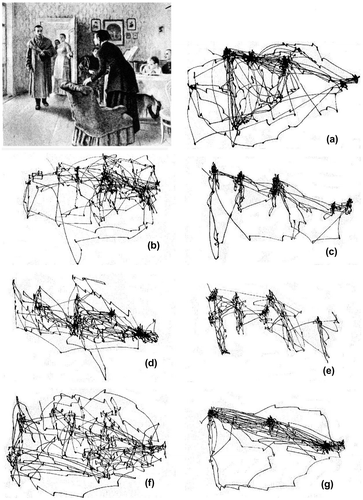
Fig. 4b. A frame from the rendered movie, combining the view from the participant’s head with the view of their eye (inset top right). A calibrated model of the eye was fitted in Yarbus software. The cross hair in scene shows where the centre of gaze was directed.
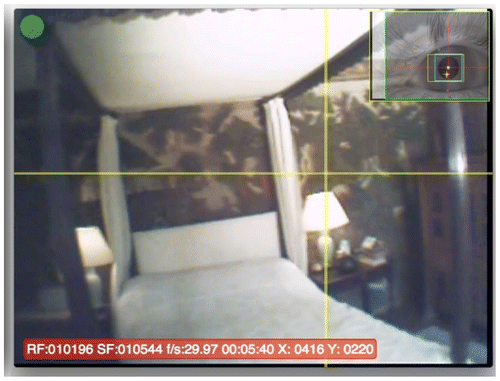
Fig. 5. Time spent in room by each of the two groups of participants following each of the four different statements prior to entering the room. Bars show mean time spent in the room. Error bars show one standard error of the mean (SEM).
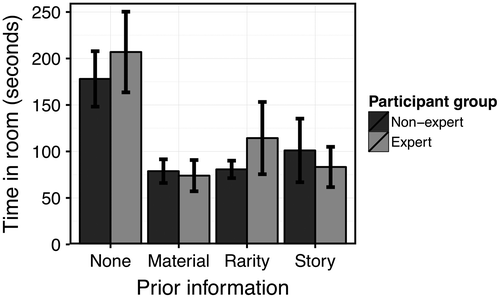
Fig. 6. Mean proportion of viewing time spent looking at each category of content in the room. Separate plots are shown for each of the four statements given before entering the room. Black bars show viewing behaviour by non-expert participants; grey bars show viewing behaviour for expert participants. Error bars show 1SEM.
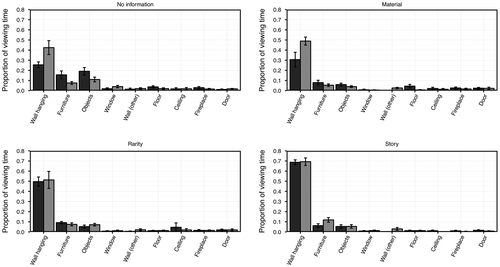
Fig. 7a. A section of painted cloth, Queen Margaret’s Chamber, Owlpen Manor, Gloucestershire, early eighteenth century.
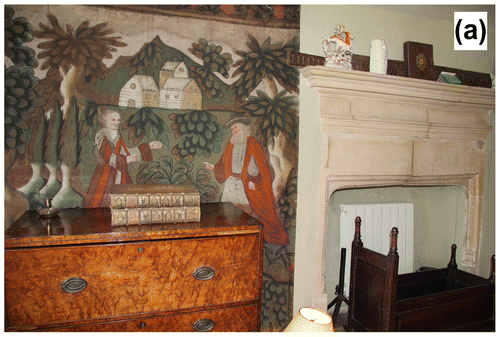
Fig. 7b. A section of painted cloth, Queen Margaret’s Chamber, Owlpen Manor, Gloucestershire, early eighteenth century, colour-coded by the regions used in our analyses for people (red), buildings (royal blue), foliage (green), top border (magenta), edge (brown) and background (sky blue).

Fig. 8a. Proportion of time looking at painted cloths that was spent on each of seven components of the painted cloths and how this was modulated by participant background. Error bars show 1SEM.
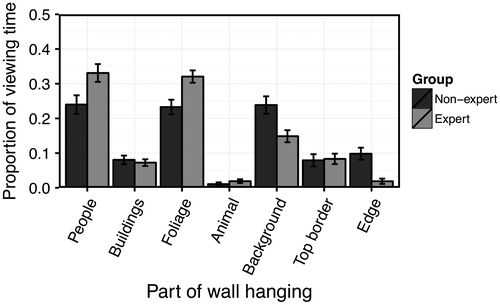
Fig. 8b. Proportion of time looking at painted cloths that was spent on each of seven components of the painted cloths and how this was modulated by information received prior to room entry. Error bars show 1SEM.
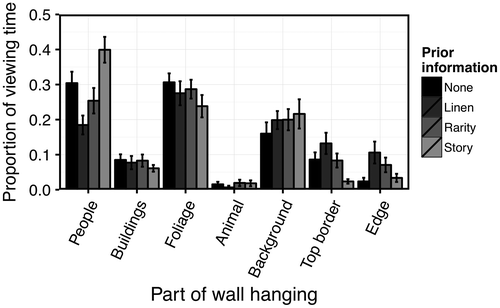
Fig. 9a. Painted cloth, Queen Margaret Chamber, Owlpen Manor, Gloucestershire, early eighteenth century, left-hand wall inside door.
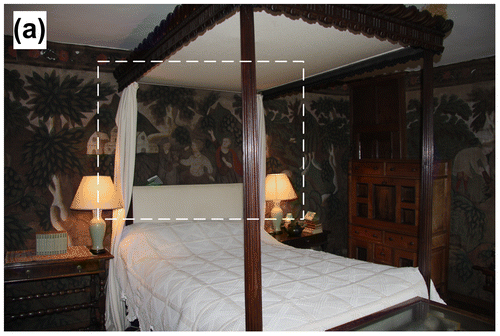
Fig. 9b. Human figures 1–3, Painted cloth, Queen Margaret’s Chamber, Owlpen Manor, Gloucestershire, early eighteenth century, detail, left-hand wall inside door.
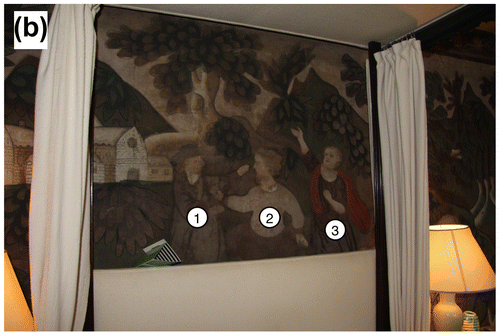
Fig. 9c. Human figures 4–8, Painted cloth, Queen Margaret’s Chamber, Owlpen Manor, Gloucestershire, early eighteenth century, wall facing door.
